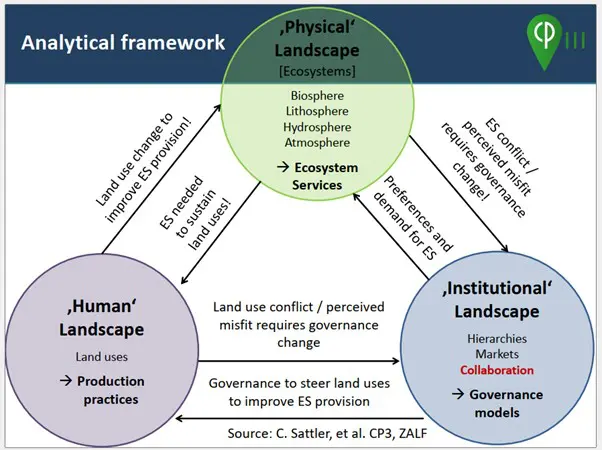Linking governance, agricultural practices, and ecosystem services through an analytical framework in agricultural regions
Agricultural regions are rarely aligned across all three perspectives: governance and administrative models (Institutional Landscapes), agricultural practices and land-use systems (Human landscapes) and the environmental biosphere (Physical Landscapes).
The Civil-Public-Private-Partnerships (CP3) project focused on collaborative governance approaches for policy innovation to enhance biodiversity and ecosystem services delivery in agricultural landscapes.
Collaborative governance can be understood as a method of societal coordination that recognizes the role of institutions and collective action, thus moving away from mostly state-carried hierarchical command and control-based approaches and instead toward more inclusive market- and community-based approaches, which include also private and civil society actors. The CP3 project developed an analytical framework linking physical landscapes (ecosystems, biosphere); Human landscapes (land-uses and production system); and Institutional landscapes (governance models or administrative structures).
This collaborative governance framework can help to better align the three perspectives in a region, which can further ecosystem services that are produced at the lower levels and in turn support the fit of governance solutions at the local to regional level.
While governance models may not entirely fit to the agricultural practices and environmental or ecosystem landscape with this framework, with synergies and trade-offs often occurring with ecosystem services, the framework may support stakeholders’ cooperation in formulating and aligning individual and common goals where resource management and allocation may follow a general rule of reciprocity or mutual benefit. A publication exploring this linkage of governance, agricultural production practices, and the provision of ecosystem services (ES) in agricultural landscapes is here.
Find out more about this innovation by contacting RóisÃn on roisin@erinn.eu. For more innovations like this, visit our Innovation Hub.





